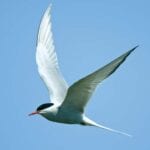Your cart is currently empty!
History of Iceland
Iceland was settled around 870 with vikings coming mostly from Scandinavia. The first settler is said to have been Ingólfur Arnarsson, but we know now that before him were Irish monks living in Iceland. Also there are indications about settlement from around 800, so probably Ingólfur was not the first one.
In 930 the settlers decided that there had to be some rules and regulations to rule the country and they established a parliament in Þingvellir. This location was picked as Þingvellir is well situated between the south and the north. Plenty of fresh water in the Öxará river and also seeping through the lava from the glacier Langjökull, being filtered for 20-30 years.
Every year there was an assembly where the settlers met for a couple of weeks in Þingvellir. They decided the laws, solved disputes and exchanged stories and information from every part of the country. These first three to four centuries are called the golden ages of settlement. People lived in peace, but that came to an end in 1220, when there was a civil war in Iceland. This war ended with the Norvegian king to take over the country in 1262. In 1397 Iceland was traded in an agreement named after the Swedish town Kalmar and became Danish colony. That was the case until June 17th. 1944 when Iceland declared independence.
The centuries from around 1400 until the 1900 were really hard on Icelanders. The climate was much colder than it is today. This period is sometimes called “little ice age”. It was not unusual to have ice all around the country during the winter. Today we hardly ever see ice by the coast line. Polar bears took land even in the south coast. People lived in turf houses, with limited heating, there was a trade monopoly which resulted in limited supplies from abroad, there were huge volcanic eruptions with ash covering the whole country like in 1783-1784 when Laki erupted. People starved and in that century 60% of the population died from starvation and epidemics.
In 1918 Iceland got so-called sovereignty from Denmark and full independence in 1944.
In the centuries until 1900 most of the population lived from agriculture and small scale fishing. Around 1900 the fishermen got engines in their boats instead of rowing boats and small sailing boats and therefore they could go further out and fish more. From that time fishing gradually grew until it became the main occupation in Iceland. In 1980´s an aluminium smelter was built in Hafnarfjörður and aluminium became a great deal of the export and in the nineteenth´s tourism started. Tourism has been growing since and has become the biggest “export” with in 2017 42% of the export and bigger than fishing and industry combined.
Uncategorized
- Reykjanes geopark & Geldingadalir eruption23/03/2021
- History of Iceland22/03/2021
- Migrating birds16/03/2021
- Reykjanes geopark & Geldingadalir eruption
- Please authorize with your Instagram account here
Connect to Us
Contact Info
+354 899 8550
[email protected]Address:
Harpa Travel ehf
Skúlagata 40a
101 Reykjavik
Iceland
kt. 600989-7079Partners






